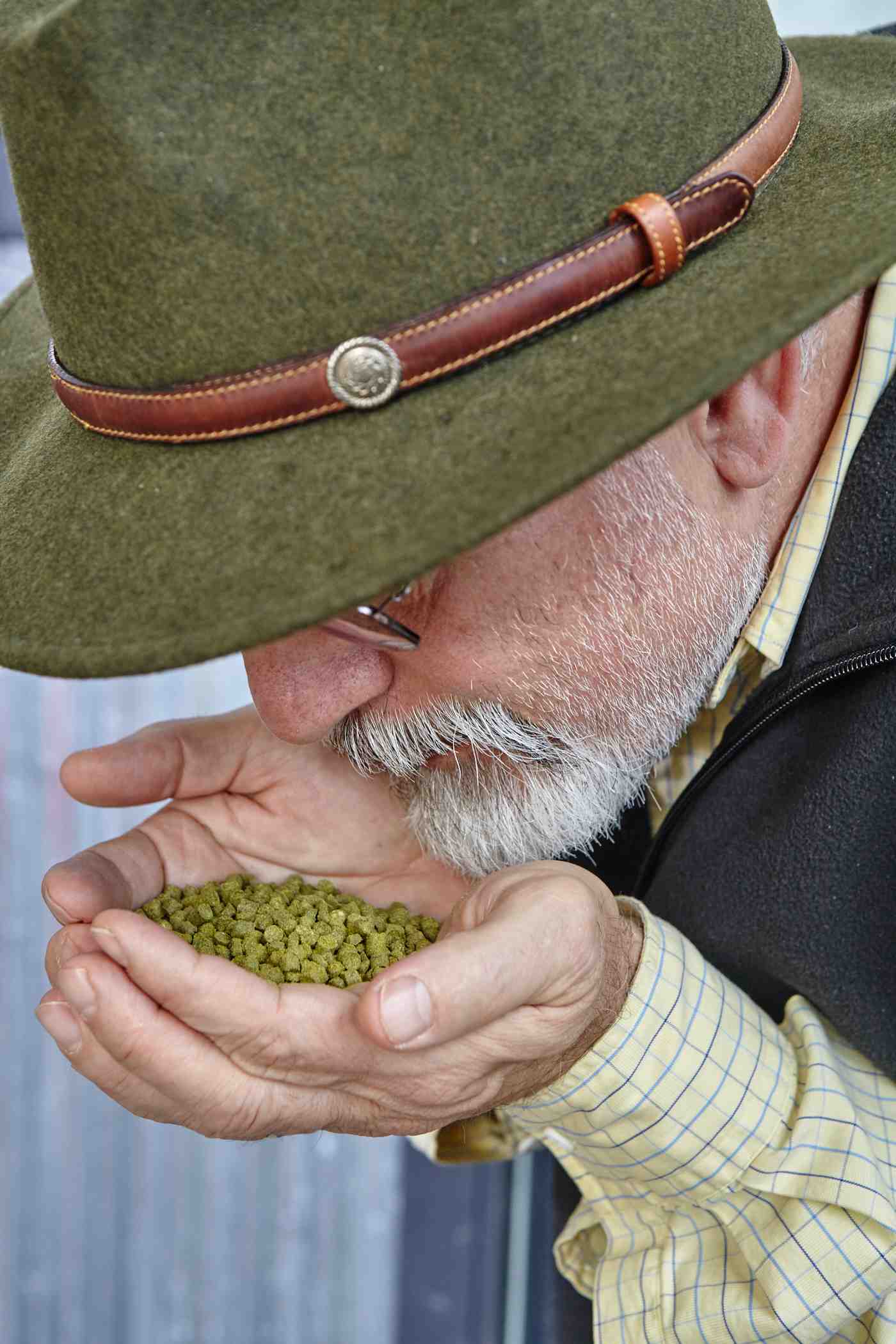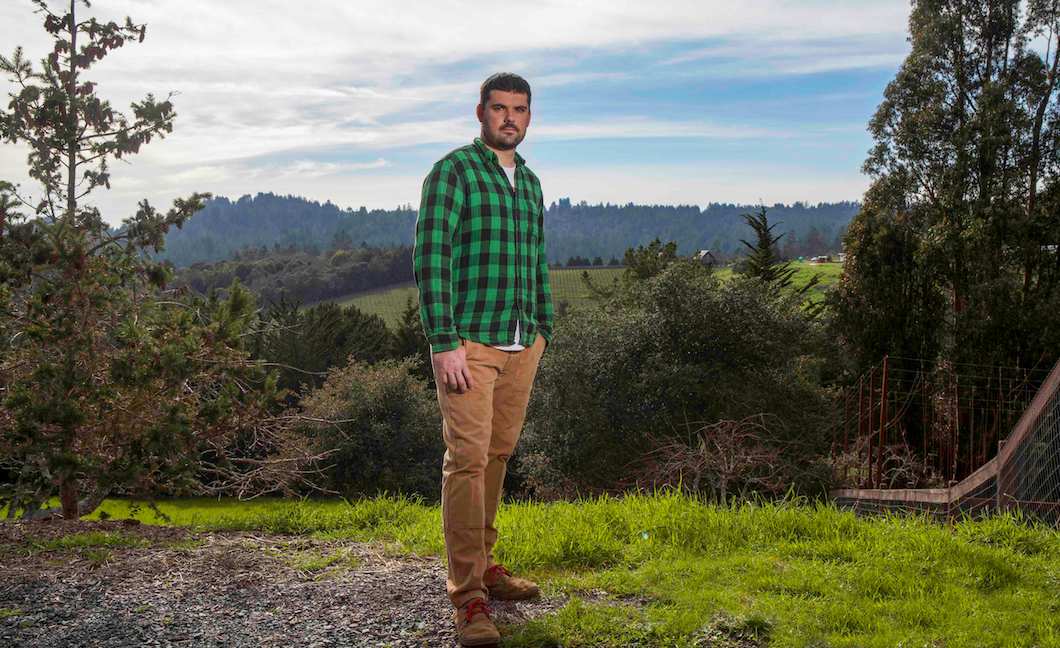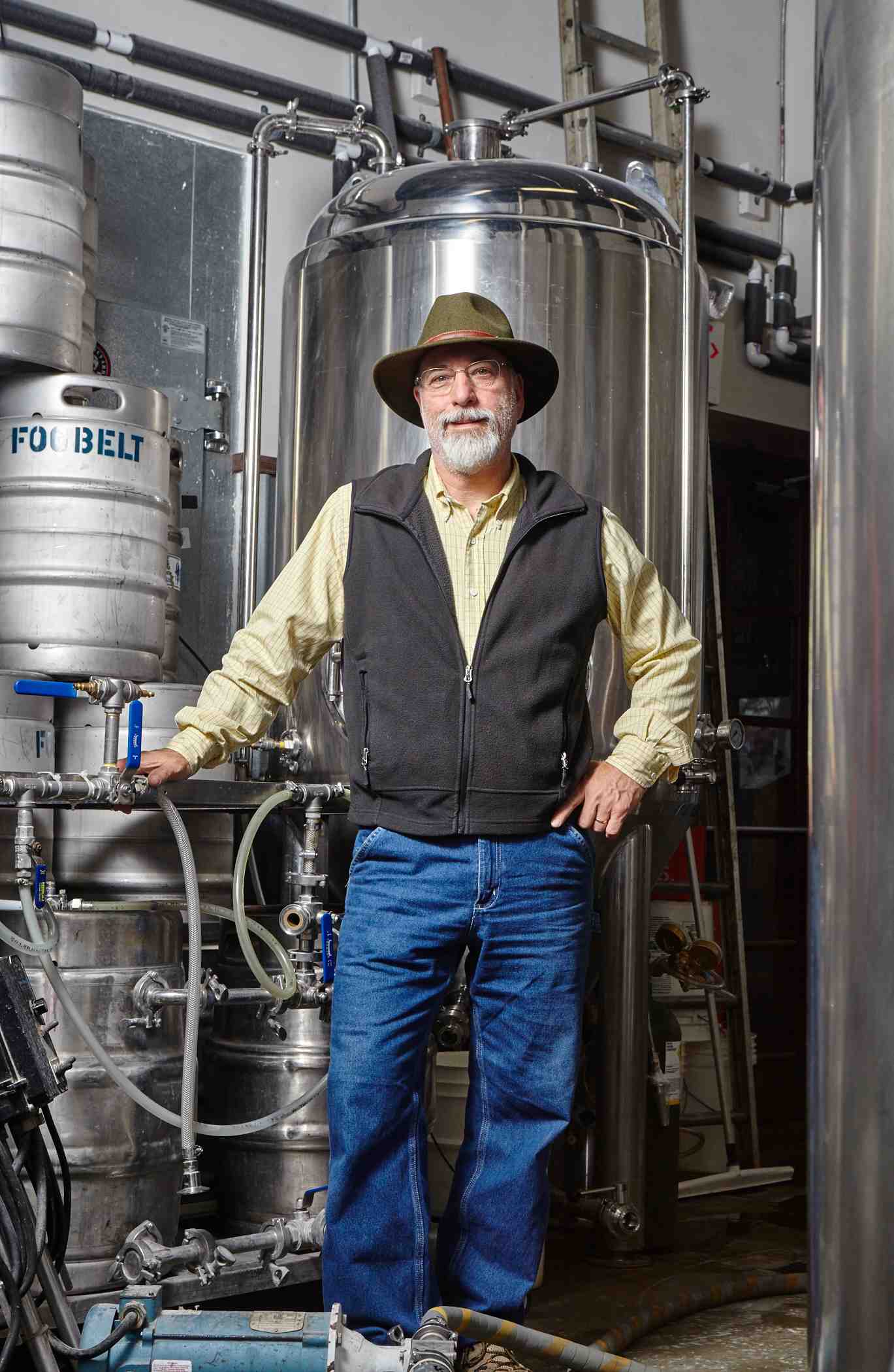With inspiration from the past, hop growing returns to Sonoma County.
On a cold January night, 10 members of the newly formed NorCal Hops Growers Alliance met around a wooden table at Fogbelt Brewing Company. They had come from Sebastopol, Healdsburg, Cloverdale, and Sonoma to discuss how best to re-introduce a crop last intensively farmed in Sonoma County over 70 years ago.
What’s more, they are trying to recapture and share information that growers like themselves would have known effortlessly nearly a century ago. Like the plants themselves, that knowledge has been lost. Or perhaps more correctly, like the plants themselves, it’s just been laying low, waiting to be re-engaged.
After the group had shared pretzel bites and declined an offer to participate in trivia night, Mike Stevenson, co-founder of the Warm Spring Wind Hop Farm outside Sebastopol and founding member of the Alliance, opened the meeting with an important bit of business. Would anyone be interested in buying a hop-picking machine?
“We really need to have a picking machine to mechanize the process, with a drum that spins and kicks out cones,” said Paul Hawley, cofounder of Fogbelt, who has been growing hops for two years in the center of his family’s Hawley Winery.
Zachary Sharrett, an organic chemistry lecturer at Sonoma State University who is investigating the fermentation of different hops varieties, expressed interest in sharing the picker. Sharrett has half an acre slated for hops. Erik Johnson, a grower with a fourth of an acre in Cloverdale who has donated his hops flowers to Ruth McGowan’s Brew Pub and Fogbelt, said he might be interested in going in on a picker. Right now, he and wife Susan Stahlberg have just 250 plants, a number small enough, Stahlberg says, that harvest is fun. “When we pick, our friends and family come up and help as well,” she smiled. “I can only do a couple hundred more plants without getting a picker,” Johnson added.
The Alliance was founded in September 2015 when Stevenson and Hawley learned there were a number of growers who wanted to supply the region’s rapidly increasing breweries with locally grown hops.
With beer lovers’ sophistication and appreciation of Sonoma County brews on the rise, growers want to nurture fresh hops from unique terroir. These can be used to create wet hops ales like Russian River Brewing Company’s HopTime Harvest Ale and Woodfour Brewing Company’s Wet Hop Session Ale No. 1, favorites among local beer drinkers and beer tourists alike. Wet hops ales have a cleaner, grassier taste than other brews. They are made with freshly harvested green hops, added in the last step of brewing. Wet hops ales last only a few weeks. Hops mature in late August, which coincides with the wine harvest, and grow crazy tall, crazy fast.
“It’s only about a three-week window when the hops are just coming out, before they get six to eight feet high. They can grow up to 20, 25 feet,” said Hawley.
Johnson adds, “When the plants get going, I don’t worry about them. I just have to make sure the weeds don’t take all the water and nutrients.”
Stevenson, who also grows cider apples, said cider makers may be interested in buying hops, too, as hops give fruity, earthy, and nutty tones to fruit-based brews. They are typically added after the cider has been aged and is ready to be bottled.
The Alliance may be able to attract more growers if they can find success with a unique, local variety of hops which appears to be descended from crops that once lined the Russian River and covered the flat plain of the Laguna de Santa Rosa. That was in the mid-1900s.
In the first half of the 20th century, Sonoma County was America’s premier hopgrowing region. The tradition had migrated west from Wisconsin and several New England states. Thousands of Italian immigrants were hired as pickers at Wohler Ranch in Forestville alone.
Yet our pride was also our fall, and the local industry took a hit in 1947 when Santa Rosa resident Florian Dauenhauer invented a mechanized hop-picker. What should have spurred Sonoma County production and harvest of crops and ensured our primacy in beer production instead allowed hopyards in Washington, Oregon, Idaho, and British Columbia to become industrial operations. Mildew, aphid infestation, hop kiln fires, and several cold seasons dealt the final blows to Sonoma County’s hopyards.
But our local hops did not die; They rested underground. A rhizome, meaning hops spring from a continuously growing horizontal underground stem, Sonoma County hops traveled, attaching themselves to trees and barbed wire fences along the Russian River.
Paul Vossen, the University of California’s Cooperative Extension farm advisor for Sonoma and Marin counties, said that, over the last half century, the variety seems to have adapted to the region’s relative lack of water and cool, foggy summers.
Many of the growers in the Alliance have been purchasing such rhizome varieties as Cascade, Centennial, and Columbus from the Willamette Valley in Oregon and the Yakima Valley in Washington. This could change if the local variety is rediscovered across the county and begins to thrive in renewed domestication.
These hops are truly unique to our area and perhaps the best expression of terroir available as they have adapted to the habitat without human care or intervention. Maintaining this unique differentiation may be key.
Vossen suggests that Sonoma County growers should engage “in a whole different thing” than hopyards to the north. “We’re never going to plant thousands of acres of hops,” he says, adding that high land costs makes widespread hop production prohibitive. Beer doesn’t make the same kind of money as does wine.
But terroir isn’t wholly attributable to hops. Jesus Cejas, a cofounder of Sonoma’s Carneros Brewing Company, has planted about an acre of hops in the middle of a 40-acre vineyard and says that what makes our beers taste different goes beyond the green. He suggests that local brewers should emphasize the special qualities of yeasts and water in the county. “Fifty-five percent of the flavor attributes come from the yeast. Adding hops masks defects,” Cejas says.
While cooperation is clearly a key component to the newly formed Alliance, members do not all agree on some suggested standards, such as the ordinary elephant in the room: The costly effort to be certified organic. Moreover, certified organic does not seem to be a driver for buyers. At the January meeting, many heads nodded as Stevenson listed potential goals that sidestepped certification.
“We’ll try to be as sustainable as possible and become stewards of the land. We want to be responsible with water usage, do clean farming and not use toxic products. We want to create a data set and build that into the [Alliance’s] website to show water usage for the season,” said Stevenson.
As the evening drew to a close, Hawley says he is optimistic about Sonoma County hop growing. “I can see it eventually working the way the wine business works, kind of having a contract going into the brewing season. We have the ability to keep these kind of relationships on a smaller scale,” Hawley said.
And interest in our beers is certainly high. Layla Aguilar, a grower at BiRite Market’s Farm outside Sonoma, said the high-end Bay Area market may have an interest in creating a beer from Sonoma County hops. Aguilar’s farm now has only about only 50 hop plants. Aguilar said she has talked with Lorren Lolo, head brewer at Carneros, about bottling ale for BiRite using Carneros’ machinery.
Caiti Hachmyer, founder of Red H Farm in Sebastopol, said she is interested in working with the Permaculture Skill Center to establish a hopyard there and produce enough to support the homebrewing community.
“I’m hopeful we’ll start a microoperation and do a test year. I would like to work with a local brewer,” Hachmyer said.
Matt Penpraze, a cofounder of Three Disciples Brewing south of Sebastopol, said he is happy that the local crop is being rediscovered.
“People are doing it independently. There’s no county or state support. There’s no agricultural commission behind hops. Now that we’re sort of getting together, hopefully we can help each other out,” Penpraze said.




